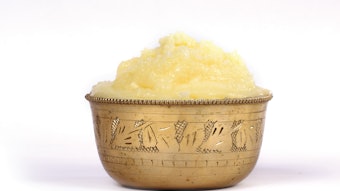
Editor's Note: This is the second article in a two-part series. Read more in part 1, What's the Likelihood of Skin Disease Creating Disability.
The burden of skin diseases affects people internationally. Genes, pollution, the environment and other potential causes of diseases are a consistent challenge for people to beat.
“We are constantly exposed to inflammation, whether it be extremes in weather, pollutants, dust, pollen, mold, certain foods, topical products, stress, medication, illness...the list goes on,” said Terri A. Wojak, business development/education director, True U Esthetics.
A study—which was highlighted in part I—mentions how conditions are challenging to understand and to find treatment for. Part II dives into treatments and the future of skin diseases around the world, in addition to further insight from skin professionals.
Worldwide Diseases
According to Peter Pugliese, M.D., dermatological literature provides details on more than 3,000 known diseases.1
“Most of the troublesome skin diseases are chronic in nature and not usually life-threatening, but they induce a considerable amount of disability to the patient in the form of both discomfort and social trauma,” explained Pugliese. “Two such diseases are psoriasis and eczema.”
While finding only a small share of cancer as a global burden, researchers from the study found hives and scabies to be significant diseases around the world.
“Scabies cause terrible problems in the South Pacific, Africa and other regions, and presents an opportunity for research and health care communities to help these populations,” explained Robert Dellavalle, M.D., Ph.D, MSPH, the paper's author and investigator at the University of Colorado Cancer Center and professor of dermatology at the University of Colorado School of Medicine.
Protecting the Skin Barrier
As part I mentioned, protecting the skin barrier is significant as it is the complex of lipids between the epidermal cells.
“These lipids are produced by the epidermis during the cell renewal cycle,” explained Mark Lees, Ph.D., CIDESCO Dipl. “Commonly called ‘the mortar between the bricks,’ this complex protects the skin from transepidermal water loss, as well as penetration of potential irritants. When the barrier is damaged, it creates 'holes' in the mortar, allowing both irritants to enter the protective outer layer, and water to escape the skin.”
The barrier function is vital for skin health and to help prevent skin from aging, he added.
Treatments and the Future
Dellavalle is hopeful for certain communities to prioritize their focus on skin diseases affecting the region most significantly.
“For example, if you're a minister of public health for a country's skin disease, you could look at the burden of disease results in your country and decide what you want to fund,” added Dellavalle.
Wojak explained how treatment for eczema, specifically, can be tricky as some people may receive instant relief while the same treatment might worsen others' conditions.
According to the study’s results, globally, skin diseases are the fourth leading cause of years lived with disability after anemia, tuberculosis and sense organ diseases.
References
- Bickers DR, Lim HW, Margolis D, et al. The burden of skin diseases: 2004 a joint project of the American Academy of Dermatology Association and the Society of Investigative Dermatology J Am Acad Dermatol. 55, 490 – 500 (2006)










